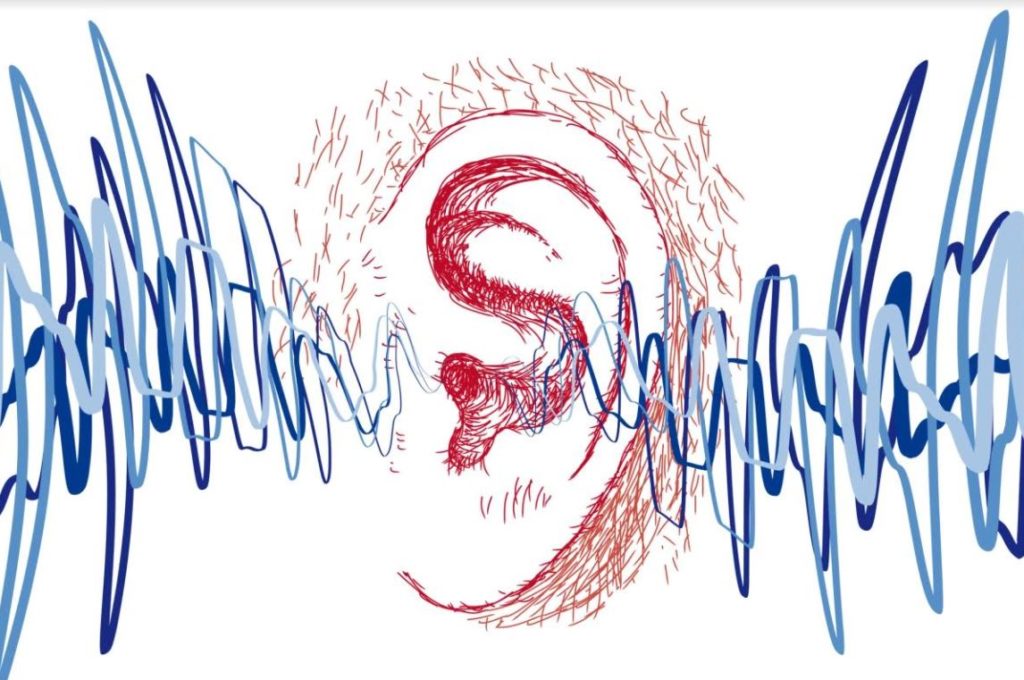
At Acoustic Fields, we have only one mission. The mission is to manage low-frequency energy with the same predictability and consistency that we measure middle and high frequencies. With our carbon technology, the industry finally has a powerful technology for absorbing low-frequency energy within our small rooms. The carbon technology is so predictable and powerful in its performance that once we know room size, volume, and usage, we can calculate the 70 %, 80%, and 90% solutions. https://www.acousticfields.com/about/ The 90% solution is mastering grade level performance. Our foam technology took 8 years to develop and cost over 2 m to create.through a 12 prototype evolutionary process. Engineers call our foam “organic” since it sounds so natural. https://www.acousticfields.com/product/acoustic-foam/ We offer 4 thicknesses starting at 1/4″, 1/2″, 1″, and 2″ thicknesses. We do not stuff boxes with building insulation and call it a “bass trap”. With “bass” or low-frequency energy that is 30 and 40 ‘ long, nothing is “trapped”. Low-frequency energy or “bass” goes right through concrete. We are on a mission to change existing belief systems and bring 40 year technology that requires large amounts of space and still does not provide enough rate of absorption that low-frequency energy issues within small rooms demands.
One area of concern in all small rooms regardless of the room usage is the floor to ceiling dimension. The floor to ceiling distance is usually the shortest of the width and length dimensions. With the smallest of the three, the floor to ceiling areas produce large issues from 50 – 90 Hz. This fundamental unwanted room energy must be managed so it does not contribute to middle and high frequency harmonic issues. Our two choices for treatment of the floor to ceiling issues are the ceiling and the floor. We should treat both the floor and ceiling. https://en.wikipedia.org/wiki/Room_modes This is not practical due to size requirements for the treatment and the additional weight of the treatment will require a substantial mounting support system if installed on the ceiling. The best way to treat the floor to ceiling unwanted low frequency pressure issue is to build the sound absorbing technology into a platform that you can place your mix workstation upon. The platform can be tuned to your room’s particular frequency response issues Most platforms average 10″ – 12″ deep. Step platforms are included to make the floor to treatment height easier to maneuver. Our DAW platform shown below places enough square footage of treatment type under the DAW. The best place to place sound absorbing technology is close to source or receiver as possible for the best sonic benefit. Our DAW platforms are modular with each module at 24″ x 48″ x 10-12″ in depth weighing 125 lbs each. You assemble them by placing them next to each other. They have a non – skid surface treatment on both sides of the platform. The platform itself nor the people working on top are in danger of slippage.
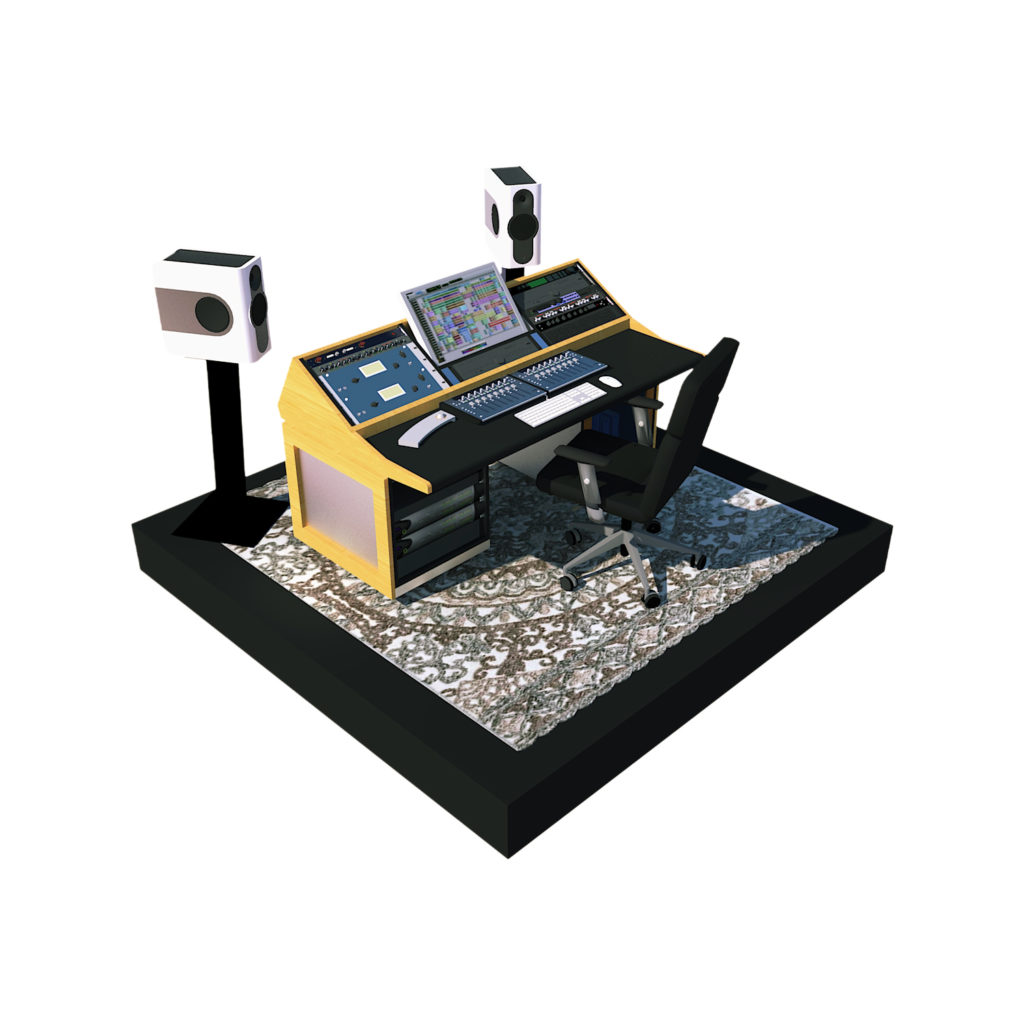
For all of you two channel listeners out there, you must use diffusion on the front and rear walls. What will diffusion sound like on the front and rear wall of your listening room? The first thing you hear here is more resolution. There is more detail in the music and voice. There is more separation or “darkness between the notes. There is more “air” and space. You hear the note start and finish, living and dying each note on its own volition, with minimum room impact on signal. With front and rear wall diffusion. your room will sound twice as large. The sound stage will be wider and taller. There will now be a real depth to the sound stage presentation. The best approach we have found in working with diffusion for over 25 years is that one dimensional diffusion works best for the front wall and two dimensional works best for the rear wall. One dimensional diffusion is when all the wells or troughs in the diffuser run in the vertical direction only. They run from floor to ceiling. The rear wall is a two dimensional pattern with alternating vertical and horizontal arrays. A quadratic diffuser that is vertically placed with diffuse sound in a horizontal array of energy. A horizontally placed quadratic with diffuse energy in a vertical array of energy. With two dimensions of diffusion on the rear wall, we minimize the impact of the rear wall reflections at the mix. You must first treat your room with the proper rates and levels of absorption before you place diffusion of any orientation within your room. The reverberation times throughout the room will also need to be consistent. https://byjus.com/physics/reverberation/
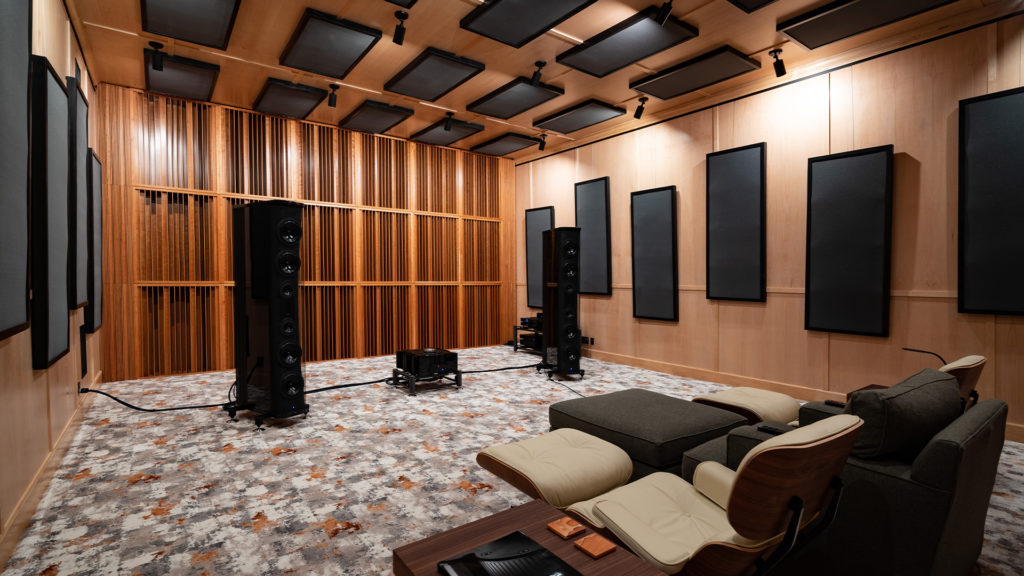
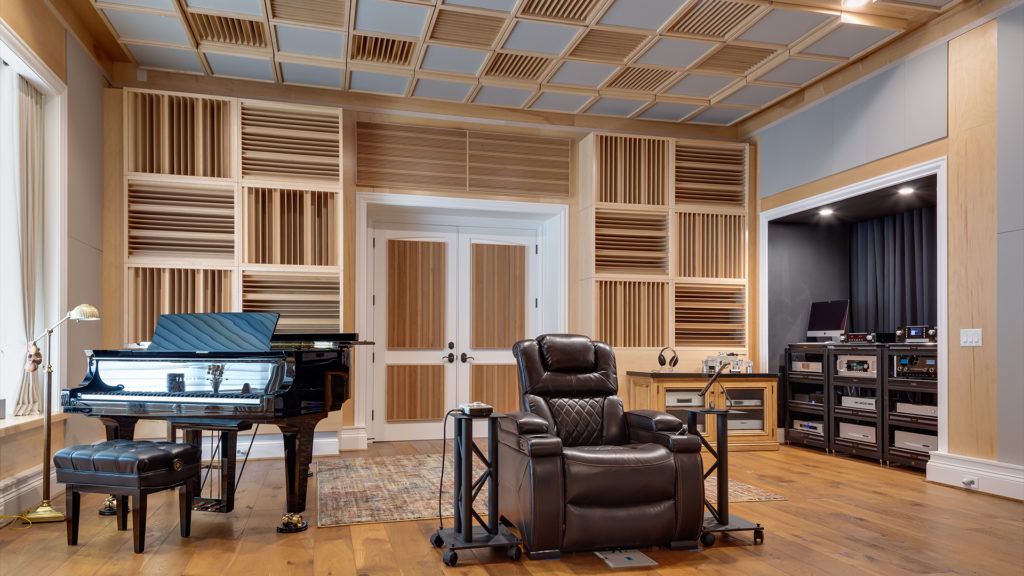
Windows are a problem in any critical listening environment. The glass surface area produces an aberration in room frequency response when measured. The glass produces a harsh, brittle sound that resembles nails running across a blackboard. Windows are not the ally of music and voice. Windows can also go diaphragmatic. This means that when low-frequency energy is placed within our rooms by a speaker or live source, the window will start to move. This diaphragmatic action produces room distortion. Our first goal is acoustics is due no harm. We can place windows within our critical listening rooms if we elevate out of the three main sound fields within our room. If we keep windows out of the sidewall to sidewall and front wall to rear wall sound field, we can have the windows for natural light. If we place smaller windows along the wall to ceiling intersection as shown in this graphic we can achieve both critical listening goals along with our need for natural light. Reflections from smaller windows in this location will not produce any issues at the listening position.
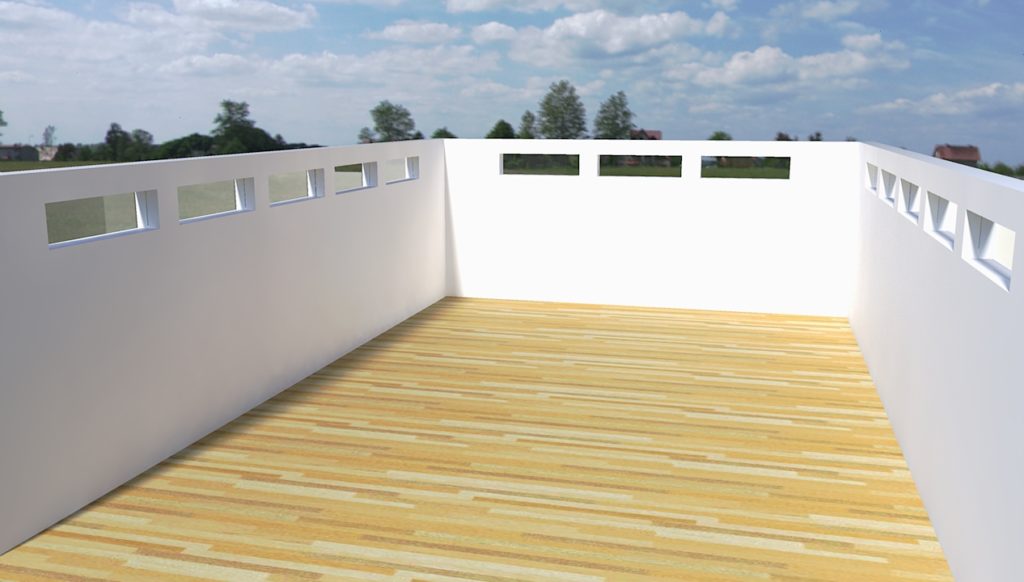
There are many things that you can do wrong in any critical listening room. Most people start with 3-4 things that are wrong and continue down the wrong road. The literature is full of misrepresentations, half- truths, and innuendo that the average person does not know what to believe. Boxes filled with building insulation are bass traps, foam will absorb “. Place “bass traps” in the corners of your room to treat the unwanted low-frequency pressure “bass” issues even though by definition an unwanted low-frequency pressure issue or mode is produced by two parallel wall surfaces not two parallel corners, use this blanket to stop the garbage truck noise early Tuesday morning so we can sleep in. The literature is full of things that are simply not true. They do not correspond to any law of physics, just the law of profit. I bought all of these lies and tested them. Only 15% work as advertised and 5% of those not consistently and predictably for the frequency stated in their spec sheets. Our products were designed because theirs do not work at all. We guarantee our products performance and appearance. We have never, not even one product returned since our company started 14 years ago. Not even a piece of foam.


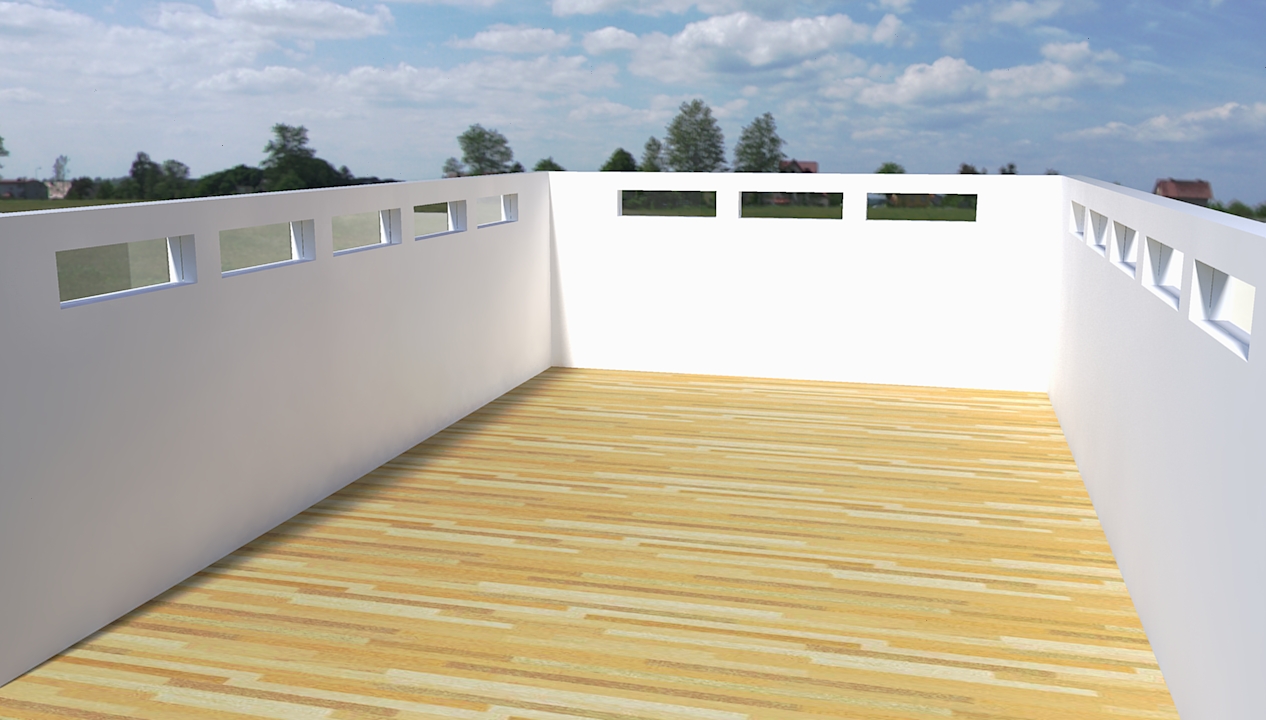





The discussion on ductwork noise transmission from Acoustic Fields highlights crucial aspects of HVAC system acoustics. The movement of air…
Great build plans. thank you Denis
You must use absorption. Never place a chair against a wall.
A friend and I built several diffusors using these plans and they turned out absolutely beautiful. Very good instructions and…